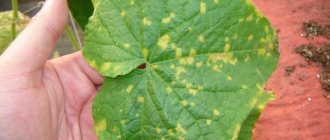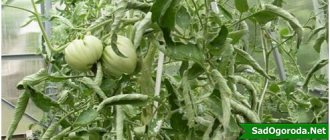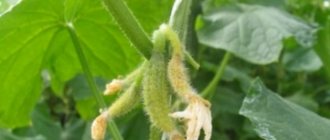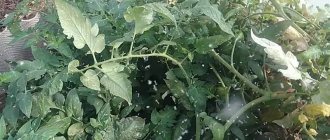It is very unpleasant to find moss or algae in a greenhouse. And fighting this scourge is not easy. But if you are faced with such a problem, do not get lost and take measures to save the soil and plants!
Green soil in greenhouses and greenhouses is a sign that it has been favored by mosses and algae of various types. At first glance, this suggests that the soil is fertile. But at the same time, the cultivated plants themselves do not receive enough nutrients, because mosses do not tolerate competitors, and algae lead a parasitic lifestyle. So don't put off fighting these green weeds!
The main reason for the appearance of moss and algae is easy to calculate - it is excess moisture. Excessive watering, melting snow, and rainwater that seeps inside cause active growth of uninvited guests. But “greening” of the soil can also be caused by other factors, which are most often present in the complex:
- improper soil cultivation, which disrupts air exchange;
- excess phosphorus fertilizers;
- high soil acidity;
- poor crop rotation;
- lack of fresh air, poor ventilation.
Before you start fighting weeds, you need to determine who exactly you are dealing with. The complex of rescue measures will depend on this. First, temporarily stop watering the plants, and then carefully examine what exactly has settled in the greenhouse.
Moss is one of the higher plants, and you will immediately recognize it by its lush stems that grow in a dense carpet. It especially loves nutritious soil, where it begins to actively grow. The moss is soft and loose to the touch. If you pick it up with your finger, the plant easily comes off the surface and falls apart.
Soil algae are microscopic lower plants that cover the soil with a thin coating-like layer. There are different species, they multiply quickly and settle in all available light areas.
Left – moss, right – algae
Moss and algae can grow simultaneously in different parts of the greenhouse. Therefore, carefully inspect all corners of the building so as not to miss lurking pests.
What happened to greenhouse soil?
Mosses and algae are bad because they take away all the useful elements from the soil, preventing vegetable crops from developing normally in the greenhouse. And it is important to find the reason that led to such a soil disease, as well as what exactly happened in your greenhouse:
Reason #1. Violation of cultivation technology
The fact is that in loose, structural soil, air exchange occurs correctly, and the roots receive the right amount of oxygen. If we stop digging the soil and loosening the beds, but at the same time we do not mulch, as nature requires, then things are bad.
Why don't we dig it up? In fact, this has its own rational grain: this way the structure of the soil is not disturbed, its two completely different layers - upper and lower - do not mix, and the farming process itself turns out to be as natural as possible. But look at the soil in the forest - where can you find bare areas? Nowhere: leaves, branches, grass, anthills - anything but bare earth under the scorching sun, and even flooded with water from above. This is no longer natural, and leads to an imbalance in the ecosystem, especially one as closed as a greenhouse. As a result, isolated spores of initially harmless mosses and algae, sensing themselves in “their” environment, begin to multiply rapidly. Not only to reproduce - to desperately seize new territory!
And all because constant watering, liquid fertilizing and compacting the soil underfoot or with tools leads to the soil becoming compacted and the air being squeezed out of it. So the soil ceases to be structural, and water seeps into it slowly, remaining more and more idle on the surface. In simple terms, it floats. In a greenhouse microclimate, these are ideal conditions for the development of moss and algae.
There is a solution: either dig up the soil every season, or constantly add loosening materials such as straw or sawdust to it. And algae and moss especially don’t like ash, so don’t spare it when digging.
Reason #2. Excess phosphate fertilizers
Have you fertilized your beds with Baikal? Not all plants in a greenhouse need large amounts of phosphorus. But you can overdo it with it! You used some kind of “universal” fertilizer once, then again, and your vegetables take only what they need from the soil. As a result, many useful microelements simply accumulate, which is even worse than their deficiency. Just like for the human body, hypervitaminosis is more dangerous than hypovitaminosis.
But a large amount of phosphorus fertilizers in the soil is the main reason that the soil in the greenhouse “turns green”, i.e. covered with moss or algae. Therefore, the point is not so much in “Baikal”, but in the irrational use of so-called universal fertilizers, which “have everything.” The solution is simple: use proper crop rotation, or fertilize the plants in the greenhouse only with what they specifically need.
To avoid oversaturating the soil with fertilizers every year, adhere to the following crop rotation:
- In the first year, plant crops that require a lot of fertilizer. For example, eggplants.
- In the second year - those that grow on lightly fertilized soil. For example, cucumbers.
- In the third year, plant something that feels quite good with minimal nutrition. For example, tomatoes.
Such crop rotation will help avoid the accumulation of unused minerals in the beds and depletion of other elements.
Green onions, lettuce and radishes will also help remove excess fertilizer. Just sow them after you have harvested the main crop.
Reason #3. pH level has changed
This often happens if the soil in the greenhouse has not been changed for a long time. Therefore, first try simply updating the beds, and treating the place itself with quicklime before adding new black soil. Here's how to do it: extinguish it, and then whitewash it where the old soil was. Let it dry well and add new black soil.
So what does pH show? This is a ratio of how much alkaline minerals and acidic salts are in the soil. Over time, the pH level in greenhouse soil constantly changes, and sometimes the plants themselves change it, releasing certain substances into the soil. In addition, watering also has an effect, where hard water reduces acidity, and soft water increases it; and fertilizers, where calcium nitrate increases the pH, and ammonium sulfate, urea and potassium chloride lower the pH.
To study soil acidity, there is a special device - an acid meter. You can also use ready-made indicators. But even by eye you can determine whether there are problems in your greenhouse with pH:
- Step 1: Take a handful of soil and place it on a plastic plate or bag.
- Step 2. Add a few drops of table vinegar.
- Step 3. If the earth seems to “boil” in places and small bubbles appear, then the soil is not acidic, but neutral, with a normal amount of lime.
- Step 4. If there is no reaction at all, the soil is acidic.
Here's another method:
- Step 1. Take a glass of grape juice and throw a lump of soil from the greenhouse into it.
- Step 2. Watch the reaction: if the juice changes color and bubbles float to the surface -
- the soil is neutral.
- Step 3. No reaction? So it's sour.
And finally, there is another fairly accurate folk method:
- Step 1. Prepare a solution from cherry or currant leaves. Let it cool well.
- Step 2. Throw a pinch of soil from the greenhouse into it.
- Step 3. If the solution turns red, the earth is acidic.
- Step 4. If the solution turns green, it is neutral.
- Step 5. If the solution turns blue, the earth is moderately acidic, which is also not bad.
On acidic soil, sphagnum moss actively grows, which releases hydrogen ions, and with their help further maintains the acidity of the soil high. As a result, bacteria develop much less, moisture is retained in the soil, and oxygen is actively delivered to the roots of plants. But, you see, it’s better not to grow moss in garden beds, but simply use it as a wonderful antibacterial mulch.
If the problem is the acidity of the soil, use any alkali: lime, gypsum, dolomite flour, calcium carbide. Calcium carbide, by the way, when reacting with water releases a valuable substance - acetylene. Evaporating slowly enough, it helps the tomatoes ripen, which is also good.
Poor ventilation
Ventilation of the greenhouse is of particular importance. Most mosses and algae do not like drafts. If you do not open the windows, the humidity in the greenhouse increases and a favorable environment is created for the germination of moisture-loving crops.
When carrying out ventilation, sudden temperature changes should not be allowed, since this is harmful for many agricultural plants. Ventilate the greenhouse in the morning and evening by removing the film or opening the windows. To make the humid air disappear faster, you can turn on the fan.
For ventilation, you can install an automatic system that will open the windows as soon as the air in the greenhouse warms up too much.
Let's take a closer look at the “enemy”: is it moss or algae?
Green soil can appear in a greenhouse for several reasons:
- Increased soil acidity.
- Poor ventilation.
- Waterlogging of the soil.
- Excess fertilizer.
Mosses and algae are plants that love a moist environment. Both too much watering and nearby groundwater under the beds can lead to their proliferation. So, if there is not enough light in the greenhouse, then moss will begin to grow with high humidity. And if it’s light, then there’s algae.
Therefore, here is what you need to do first if the soil in your greenhouse suddenly turns green:
- Step 1. Completely stop watering the plants.
- Step 2. Let's take a closer look at what exactly grew in the beds and gives the green color.
- Step 3. If it turns out that it is moss, we direct additional lighting or sunlight onto it using a large mirror, and open the windows.
- Step 4. If the culprits of the green color of the beds are algae, protect such beds from the sun as much as possible, and cover them with a layer of sawdust or sand on top. We ventilate the greenhouse well.
These are the first steps. What else needs to be done - read on.
Overmoistening
Moss begins to sprout in a greenhouse or greenhouse due to excessive moisture. Moss spores get inside along with irrigation water, are carried on shoes or with other objects. Under favorable conditions - twilight, humidity, warmth - it begins to germinate and multiply. Here's what to do when you find areas of overgrown moss:
- stop watering for several days;
- ventilate the greenhouse;
- remove the thin top layer of contaminated soil or dig it up.
Usually these measures are sufficient if the cause is waterlogging. It happens that green algae begin to grow in heavily moist areas. They should be sprinkled with sand or sawdust, since they spread quickly in the light, unlike moss, which prefers twilight.
Is the greenhouse soil covered with moss?
So, you have determined that the soil in the greenhouse has turned green due to moss. Let's say that moss is a fairly peaceful plant, and it is often specially grown. But moss is included in the classification of weeds for a reason - it will still have a negative impact on the harvest. If there is not much moss yet, just scrape it off and throw away the removed layers.
Reason #1. Ideal conditions created
Let's first check if the conditions for the appearance of moss are created in your greenhouse:
- Step 1. Take some earth in your hand and look at it. If it crumbles reluctantly, it means it is still waterlogged. In this case, simply add sand to the soil and aerate it, and where there is the most moss, make additional depressions and fill them with river sand.
- Step 2: Now test the soil for pH value. If it is acidified, then moss will grow on it with a brown bottom and a green top. Is this the case? Restore the acid balance with dolomite flour, and apply fertilizer in the spring, because... Moss grows precisely on acidified and poor soil.
- Step 3. Check to see if moss has appeared in places where you always have shade in your greenhouse? Perhaps something is shading it - a support or a tree nearby? Then place reflective foil nearby, which will illuminate this area - just as they do in a thermos greenhouse. A simple and effective solution.
Reason #2. The soil is too acidic
If you determine that it is moss, then the soil is still acidic. And if the moss is not touched for several days (for example, you go to the country only on weekends), then it will spread as quickly as possible. Plants will begin to lag behind in growth, because the moss will take over all the valuable substances that it finds in the soil. Therefore, act immediately, especially since this is a solvable problem. Just follow these instructions:
- Step 1. First, add the ash, scattered, and do not dig it up.
- Step 2. Right now, sow annual green manures - mustard, rapeseed or oilseed radish. Within a month, the soil will be covered with a continuous carpet of greenery.
- Step 3. Plant your seedlings directly onto this carpet.
- Step 4. As soon as it takes root, mow the green manure and leave it directly on the beds as mulch.
- Step 5. After harvesting, sow green manure again, already winter, and let it remain there, even under the snow.
But let’s first figure out how often you need to apply lime fertilizers to greenhouse soil:
- In normal, rich soil - once every 4-5 years.
- In light soil - every 3-4 years.
- In severe cases - after 5-6 years.
When applying, keep in mind that the finer the limestone you grind, the stronger its effect will be.
In one year, your greenhouse soil will be completely healed. But remember that moss often grows where the soil layer is too dense and there is a lack of nutrients. What to do? Soil aeration. Try to make holes about 10 cm deep, every 10-15 cm.
Reason #3. Moss “crept” from the frame
And finally, moss is a rather picky plant, and therefore it feels great on both stones and trees. Therefore, if its elements have already appeared in your greenhouse, carefully examine the wooden structures - are they the first to turn green? Moss can be removed using iron sulfate if it is a tree, and with a soda solution if it is a stone. Get rid of this cause of greening of the ground immediately, before the plant begins to spread in the ground.
The rapid growth of mosses is also provoked by phosphorus fertilizers, which are sometimes applied too much. And sometimes moss appears on beds that were previously treated with a herbicide such as Roundup. In this case, no additional treatment is needed - just dig up the ground and the problem will be solved.
Fertilizers
The reason for the rapid spread of algae in a greenhouse may be an excess of phosphorus fertilizers. If the ground is covered with a green coating, it is worth considering whether you fertilized with phosphates too often.
All plants need phosphorus, especially during the first stage of growth. It promotes the development of the root system and participates in photosynthesis processes. But excess phosphorus can cause plants to poorly absorb iron, zinc and some other trace elements. Unlike nitrogen, phosphorus anions can be fixed in the soil and remain undissolved in it. To get rid of phosphorus, you need to change the soil.
Under natural conditions, excess phosphorus in the soil is very rare, but if improper fertilizing is used, its consequences can be observed, so do not get carried away with mineral fertilizers.
Amazing discovery: are your beds “swimmed” with algae?
Sometimes the groundwater rises on its own during the rainy season, but in the greenhouse we continue to water everything according to schedule. Result: the greenhouse has turned into a real aquarium, where algae just belong!
A good solution is to mulch all the beds in the greenhouse, and now you won’t need to water as much. Be sure to also pay attention to ventilation. Plants, like people, need fresh air. Even if you flood the open-air beds in the same way, they will not turn green, because... the moisture from them will evaporate quickly enough.
Mulch greenhouse beds correctly:
- Step 1. Water the soil well.
- Step 2. After watering, loosen the soil around the plants and in the beds themselves.
- Step 3: Lay down the mulch in an even layer.
- Step 4. Be sure to leave space between the plant stems for normal air circulation.
But there are situations when conventional methods are not suitable, and algae actively continues to grow. You will have to fight them with chemicals, except copper sulfate, which will kill all living things along with the algae. But in subsequent seasons you will have to adhere to these rules:
- Constantly check the soil for acidity.
- Mulch all beds.
- After each harvest, completely replace the top layer.
- It is good to think through crop rotation so that the greenhouse soil has time to recover.
And if there are often puddles in the greenhouse due to high groundwater, proceed to growing in special ridge boxes:
Prevention
To avoid greening of the soil, you first need to carefully consider the location of the greenhouse. If possible, the structure should not be located in a lowland, where melt water will flow in the spring.
- Installing a drip irrigation system will ensure uniform soil moisture.
- It is necessary to regularly ventilate greenhouses.
- And in winter, on the contrary, carefully close them so that snow does not accumulate inside.
An effective preventive measure is to annually replace the top layer before sowing.
Mulching the soil and controlling the acidity level will also prevent the appearance of moss and algae on the ground.
What are some ways to replace topsoil?
The soil is replaced when the greenhouse has already been harvested and the plants have been dug up, and also if gardeners know that the soil is turning green in certain places and prevent this before planting seedlings in the spring.
Replacing the soil partially or completely is a labor-intensive process that requires a lot of time and effort. It is used when other options have not worked.
Stages of soil replacement work:
- Remove the top layer from the soil. The minimum layer thickness is 30 cm.
- Fertilize the surface of the earth with lime, and after a day fill it with water. This is how the lime is slaked.
- Whiten the soil. The entire surface with slaked lime is thoroughly whitened and left in this form for a couple of days.
- Lay new soil. This stage is started only when the whitened layer has dried.
Soil replacement can be done if the new fresh soil does not carry new diseases or pests. This operation is best carried out in the spring.
Moss in the garden plot, how to defeat it?
Moss on the garden plot Most attempts to get rid of moss on the plot end in nothing for gardeners.
Don’t give up - after all, we are basically trying to get rid of the external manifestations of the problem. However, in order to definitely get rid of moss, it is necessary to find and eliminate the cause of its appearance. Moss primarily grows in the fall and spring on dense, poorly drained soil. This happens because moss loves moisture very much. And in areas of soil where water stagnates, it grows constantly. Moss also becomes a frequent companion on sandy soils, which drain water well. The second reason for the invasion of soil by moss is the lack of nutrients, its severe acidification and shading. If the area is heavily infested with mosses, it is imperative to fight them! If you correctly identify the cause and eliminate it in time, there is a problem
There are special chemicals that will help you in the difficult fight against moss:
- Treat in autumn and spring with a special product. You can burn off the moss with a general herbicide. A good way is to water the moss area with a dichlorophen solution. The dead moss can be raked after a few weeks and these areas can be replanted with grass.
- If possible, reduce the shading of the area with moss.
- An effective way to combat moss is to increase fertility by adding sand to the soil in the autumn. Use fertilizers twice a year; you can also deoxidize the soil with dolomite flour
If there is not so much moss, then you can make beautiful lawns from areas of its constant growth, if it does not bother you. Such lawns are now very popular among landscape design lovers.
DachaDecor.ru
Increased acidity
Mosses grow especially actively in acidic soils, so it is important to determine the acidity level and take measures to restore the acid-base balance.
You can determine the acidity of the soil using indicator paper or a special device (garden meter). If you do not have a device, take the soil to a laboratory for examination. There are also traditional methods for determining acidity.
Take 5-6 blackcurrant leaves and pour a glass of boiling water. After an hour or two, when the broth has infused, a handful of earth is thrown into it, the acidity of which they want to determine. The decoction changes color. A reddish color indicates high acidity, green indicates low acidity, and a slight blue indicates neutral soil. Beetroot grows poorly in acidic soils, but sorrel thrives.
- If the soil is slightly acidic, it can be fertilized with ash.
- Quicklime or chalk is added to highly acidic soil.
Liming can be done with industrial lime fertilizers or natural lime, marl, or shale ash. Lime substances are added during the preparation of the greenhouse - in spring or autumn.
Lime application rate in kilograms per square meter depending on acidity and soil type
TeplizaNaDache.ru
Why does the soil turn green in the beds where cucumbers and tomatoes grow in a greenhouse?
Larisa
This is called the earth “blooming”, mold, moss. Very compacted and moist soil. In addition, it may be shaded and poorly fertilized. It is necessary to improve the soil structure: add sand or peat, it would be nice to add lime. The heifer needs to be ventilated more often, the soil should be loosened, and plants should be planted sparingly.
▄▀▄▀ †Crypt Biker † ▄▀▄▀
ACIDIC EARTH
nn
It is still over-watered, and the only way to get rid of spores is with herbicides. special means. Some write about copper sulfate. But is it worth poisoning the land? Do not water temporarily; let the soil dry out.
Hedgehog
fungus from excessive dampness
Svetlana Busygina
It's algae.
Irina Vladimirovna
That's right - excess moisture.
Dragon
less water needed
n.
from the cheese, naturally, and there are poultices too
Vladislav
The reason is the same why the walls of water bottles turn green in the light. Even when using chlorinated tap water, this is especially noticeable in the spring. Favorable conditions for the development of green algae: light, warmth, moisture and some organic matter. There is an abundance of all this in greenhouses.
Igor Goncharuk
Excess moisture in the soil and in the air, warmth, poor soil respiration, acidic soil reaction - ideal conditions for the growth of all types of fungi, lichens, mosses...











